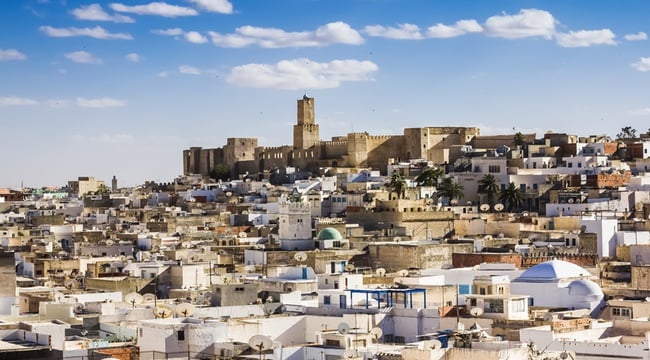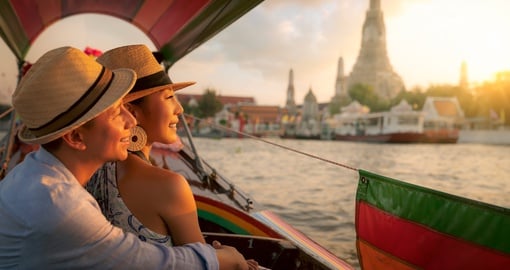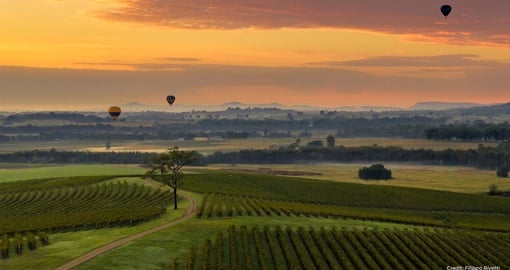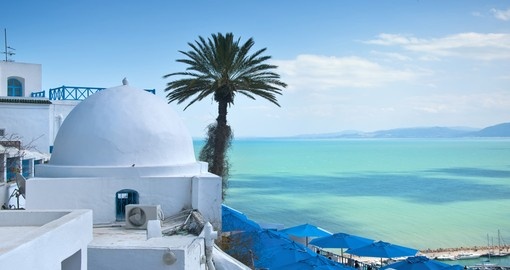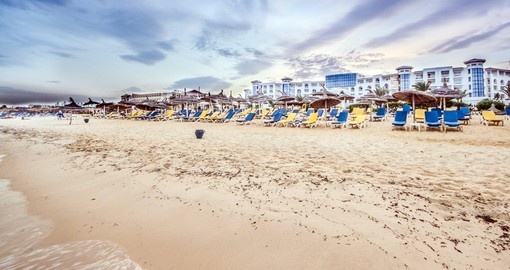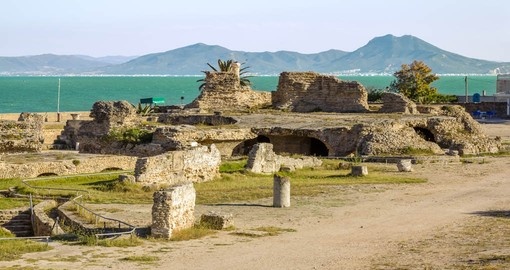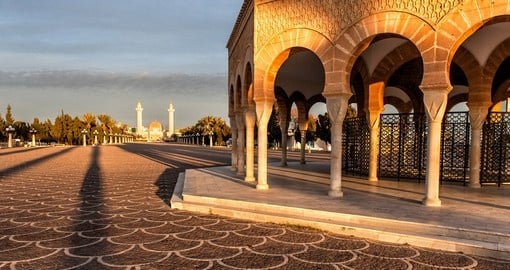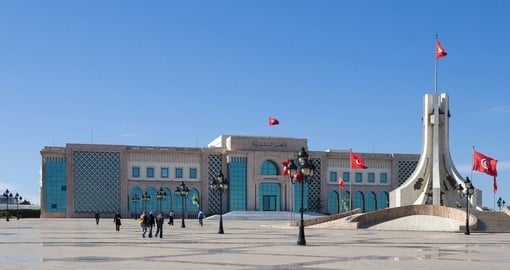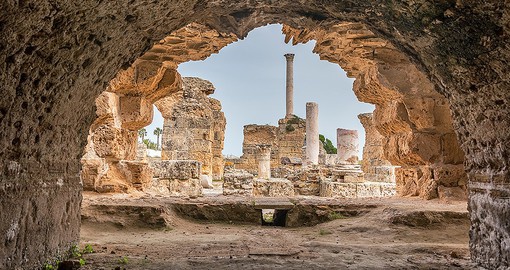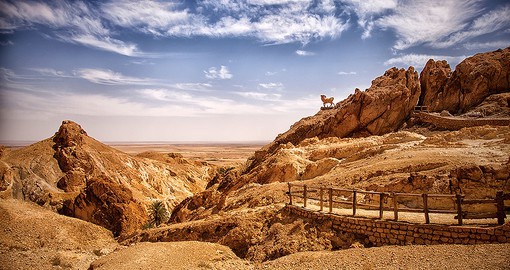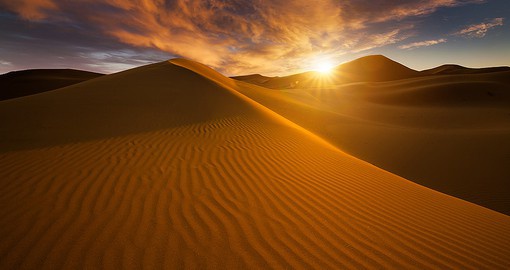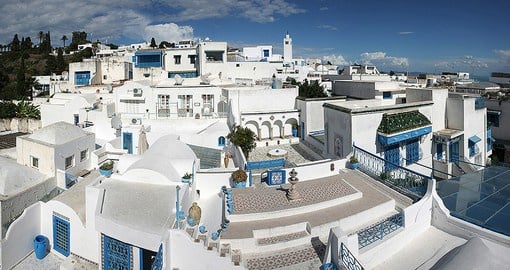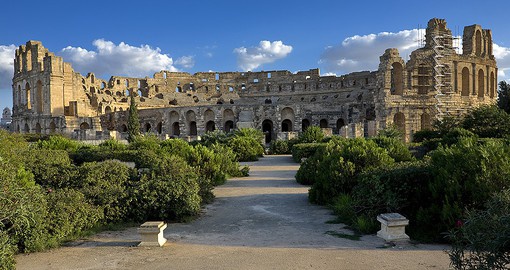Essential Facts
Currency
The main currency that you will find in this beautiful desert country is the Tunisian Dinar. The dinar is the only accepted tender. However, Visa and Mastercard are also widely used and accepted in major cities and at resorts. Many larger local stores, hotels, and restaurants likely will accept Visa debit cards as well, but often smaller shops and areas outside major cities will only take cash. Canadian and US dollars can be exchanged for dinar upon arrival in Tunisia at a currency exchange or local ATM, and dinars are not allowed to be removed from or purchased outside of Tunisia.
Language
The official language of the country is Tunisian Arabic, but most Tunisian people (especially in tourism-related jobs) have a really good understanding of English and French. The further you go outside of the main cities and towns, the more basic the knowledge of English may be, so it’s always encouraged to learn a few key Arabic phrases. “Hello” and “goodbye” are “aslema” and “bislema,” whereas “thank you” is “yaishek” and “yes” is “ay” (rhyming with “say”). Any attempt that you can make to speak a bit of Arabic will typically be welcomed by the local Tunisians.
Best Time To Go
Tunisia is quite a pleasant country to visit year-round, but the best time to travel here depends purely on what you would like to do during your visit. For beachcombers and history buffs seeking out the northern coastal Mediterranean regions, June to October will provide ideal hot and sunny weather. Planning your trip in spring or early fall will also give you lovely air and ocean temps. However, you will benefit from slightly less crowded beaches and sites.
Travellers who want adventure and the awe-inspiring sites of the Sahara will want to avoid mid-summer months of August and September. From autumn to spring, the temperatures are much more moderate, but can get very cold at night in December and January, so visitors will need to plan accordingly.
Climate
Because of Tunisia’s unique shape and geographical location, there is an interesting swing of temperatures from the north to south of the country. The northern region, predominantly known for the beautiful beaches and larger towns, has a typical Mediterranean climate like you might expect in Greece or Sicily. Summers are hot (average around 32°C/90°F) while winters can be cooler and rainy though still mild (average being 13°C/55°F).
Once you move to the southern Sahara region, the temperature changes are much more drastic. This region sees freezing temperatures overnight in the cooler winter months of December and January (hovering around 0°C/32°F), whereas in peak summer months of July, August, and September the average daily temperature is a consistent 40°C/104°F.
Ideal Traveller
With Tunisia’s 1,000 kilometres of natural beach and great value accommodations in towns full of fun nightclubs and bars, Tunisia is a relaxing vacationer’s paradise. Those seeking a bit more adventure can find plenty of it across the desert sand dunes of the south, or the Atlas Mountain range of the northwest. History seekers will love the ancient history found scattered across the country, from sites just outside major cities as well as nestled in oases in the desert.
Getting There From North America
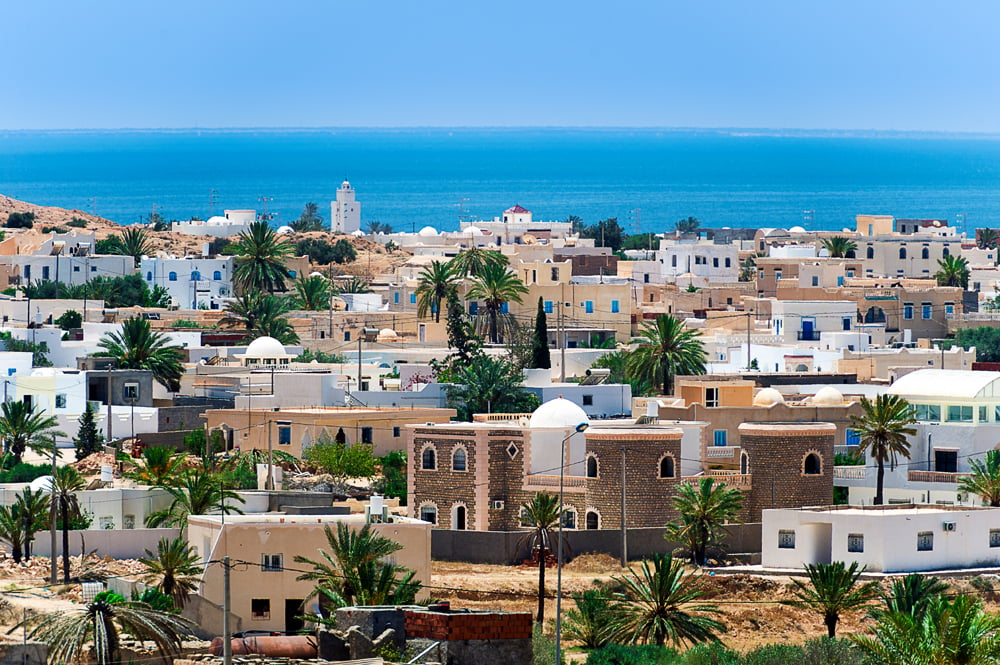
Major Airports
The largest airport in Tunisia is Tunis-Carthage International Airport, which is located in the capital city of Tunis on the northeast coast of the country. This is the main air transportation centre into and out of the country, serving over a million people each year out of its two terminals. There are smaller airports located in the beach destinations of Hammamet and Djerba, which makes a relaxing holiday easily accessible. Visitors only interested in exploring the Sahara Desert regions of Tunisia would be best served to fly into Tozeur-Nefta International Airport. Citizens of the United States and Canada do not currently require a visa to visit Tunisia for less than 90 days, but travellers should always check updated visa requirements while planning a trip.
Recommended flight route from the United States
From most major US cities like New York (JFK), Atlanta, Boston, Chicago, and Los Angeles, there are frequent connecting flights available through Delta/Air France, which typically go through Frankfurt or Paris before reaching Tunisia. There are also some great value flights available with Turkish Airlines, and travellers could always extend their stopover in Istanbul for a great crossover trip.
Recommended flight route from Canada
Flights from major Canadian cities like Toronto or Vancouver run frequently in high season, most typically with Delta/Air France combo flights via Paris. Visitors from Montreal are perhaps the most fortunate, with great value flights with Delta/Air France usually connecting through Paris and even direct flights with TunisAir. This is because of Tunisia’s strong connection with French-speaking countries, having only gained independence from France in the late 1950s.
Essential Sights of Tunisia
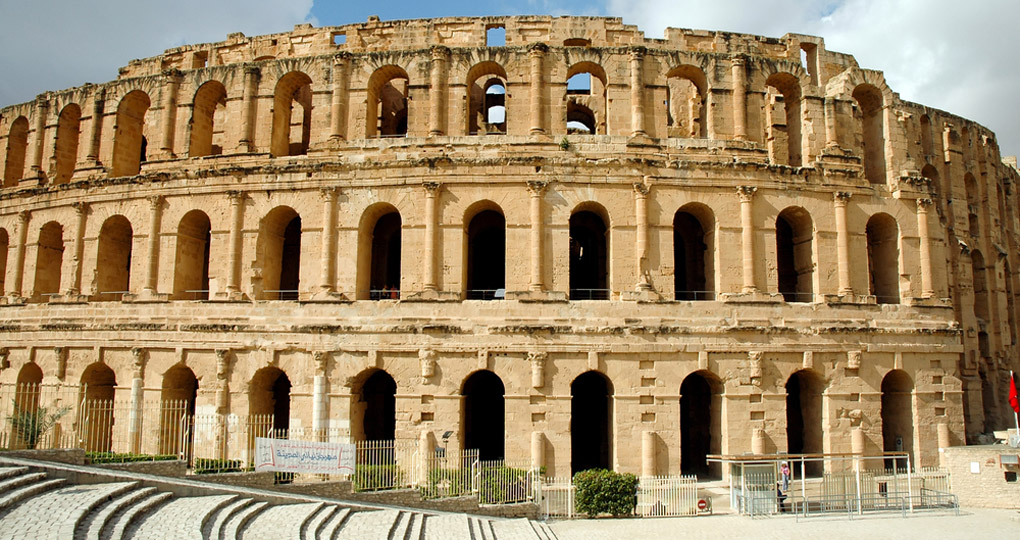
Beaches of Hammamet and Djerba
One of the most common reasons to visit Tunisia is to enjoy the beautiful beaches on the northern Mediterranean coastline, chief among them the resort towns of Hammamet and Djerba. Less than an hour from Tunis, Hammamet is known for its plentiful water spots, nightclubs of Hammamet Sud, and relaxed lounge-style spots in the Yasmine marina area.
Djerba, meanwhile, is an island full of luxury resorts and a very relaxed beach vibe. The beautiful hotels and bazaar-like medinas of Houmt Souk will charm you, while the popular plages (beaches) of the northeast coast provide days of relaxation.
Tunis
The capital city of Tunisia since the fall of Carthage in the 13th century, Tunis is home to over 600,000 Tunisians with a strong sense of culture and an interesting mix of backgrounds from North Africa, Arabic neighbours, and even Europe. This city boasts architecture with Indiginious, Roman, and colonial influences. At times controlled by Romans, Phoenicians, Berbers, and the French (until 1956), Tunisia’s variety means that wandering the Tunis Medina (a protected UNESCO World Heritage SIte) with its mosques and churches will show you the meaning of the phrase “living history.”
Douz, the Gateway to the Mighty Sahara
Just across the Chott El Djerid salt-flat, you will come upon an oasis in the desert: Douz, covered in over 500,000 palm trees. A camel ride here at sunset (with a reputable tour operator, of course) would provide you with some incredible memories, watching the colours shine across the open sky with endless desert stretching before you. Stargazing here is amazing too due to the low light pollution. Another great way to sightsee the desert dunes is by four-wheel vehicle with an expert guide, which makes the most of navigating the dunes and trails. Alternatively, rent a quad bike for short jaunts.
El Djem Amphitheatre
Rising up out of the desert just over two hours from Tunis is the striking El Djem Amphitheatre. In its heyday, this was the third largest amphitheatre in the Roman Empire and the largest Roman structure in Northern Africa in the town formerly known as Thysdrus. This theatre was used for the same purpose as the Colosseum, pitting gladiators against animals for entertainment and is remarkably well preserved to this day. All three floors of one side are fully in place, with all the stairs and viewing galleries intact as well as the basement that housed the animals and fighters.
Carthage and the National Bardo Museum
No historical sightseeing visit to Tunisia would be complete without visiting the ruins of Carthage, located just outside Tunis. The city of Carthage was once a major centre of the mighty seafaring Phoenicians and a huge rival to Rome. Accordingly, as the Roman Empire became stronger they took over the city of Carthage—destroyed and then rebuilt it—leaving behind the sprawling archaeological ruins we see today. To get more insight into the significance of Phoenician, Roman, and Byzantine history in Carthage and elsewhere, visit the National Bardo Museum in Tunis. Thousands of artifacts can be found here from top archeological sites around Tunisia, showing off the country’s vast and ancient cultural history as well as displaying beautiful artistry and many intricate mosaics.
Other Highlights of Tunisia Off the Beaten Path
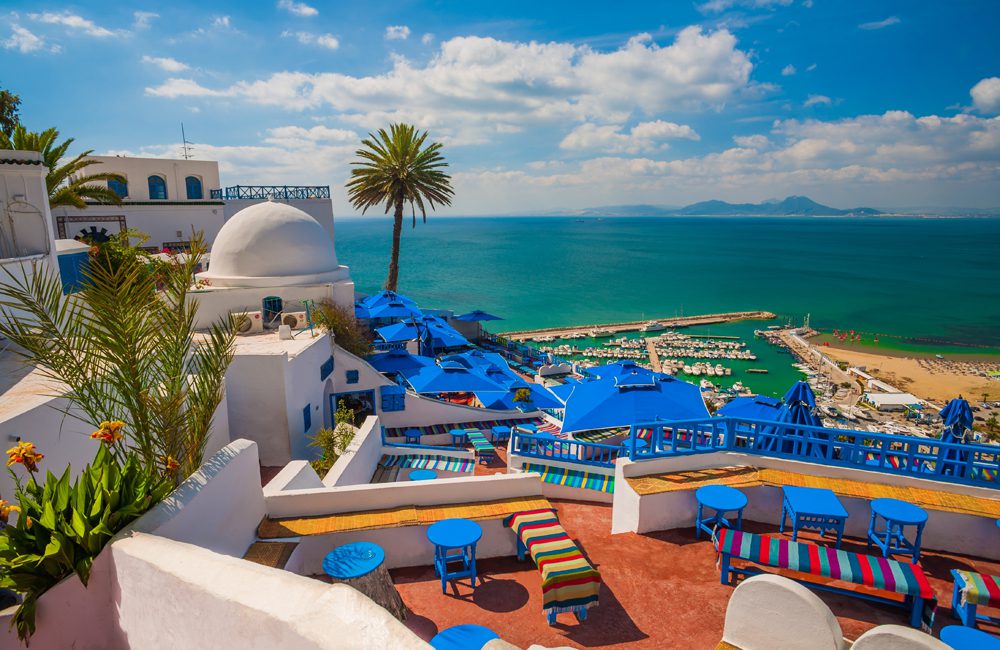
Star Wars Movie Sets
Fans of the Star Wars universe will likely find some of the desert areas of Tunisia look very familiar—diehard fans may already know that the country was a major filming location for the series! The town of Tataouine inspired the name of Anakin and Luke Skywalker’s childhood planet of Tatooine, and the functioning Hotel Sidi Driss played the part of Luke’s childhood home, the Lars Moisture Farm. Other interesting locations from the movies include the Chott el Djerid salt flats (the landscape outside the Lars homestead), the Ksar of Medenine (stacked Berber structures, which served as Anakin’s slave quarter home in The Phantom Menace), and the outside shots of Mos Eisley Cantina filmed on the island of Djerba. Keep in mind that lots of these locations were built up and dressed for the movies and may not look entirely like they did in the classic series, but that’s Hollywood, baby!
Sidi Bou Said
The quaint and picturesque village of Sidi Bou Said may remind some travellers of the Greek island of Santorini, only dotted with palm trees and with colourful Tunisian flair. The iconic white buildings with vivid blue doors, windows, and roofs call back to the sea and sky in the background, and has long been a celebrated town of artists. Some of the bold and unique architecture found here may even remind you of southern Spain and Portugal—a reminder of the influence that each country has on another.
Traditional Berber Culture
The Berber people are semi-nomadic people who live all across Northern Africa, moving their herds and wares with them across the desert between settlements. Residents of Tunisia since before even the Arab culture, one distinctive Berber structure that you can find in several places across Tunisia, such as Chenini and Douiret, are the Ksour (plural of ‘ksar’). These buildings are carved out of the tops and sides of mountains, with rooms hollowed out of the rock walls and historically were used to safely store harvests. The coastal town of Gabes is one of the only Berber settlements on the waterfront, and here you can find the colourful textiles produced by the local people and their Berber language is spoken freely.
Get Pampered at a Thalasso
For those visitors looking for a relaxing vacation, look no further than Tunisia’s thalassos and spas. Thalasso treatments involve the use of Mediterranean seawater and sea mineral therapies to relax and rejuvenate the body. As important culturally as Turkish hammams or Scandinavian saunas, a thalasso is a full-body experience and can be enjoyed at many lovely coastal resorts.
Top Activities and Experiences in Tunisia
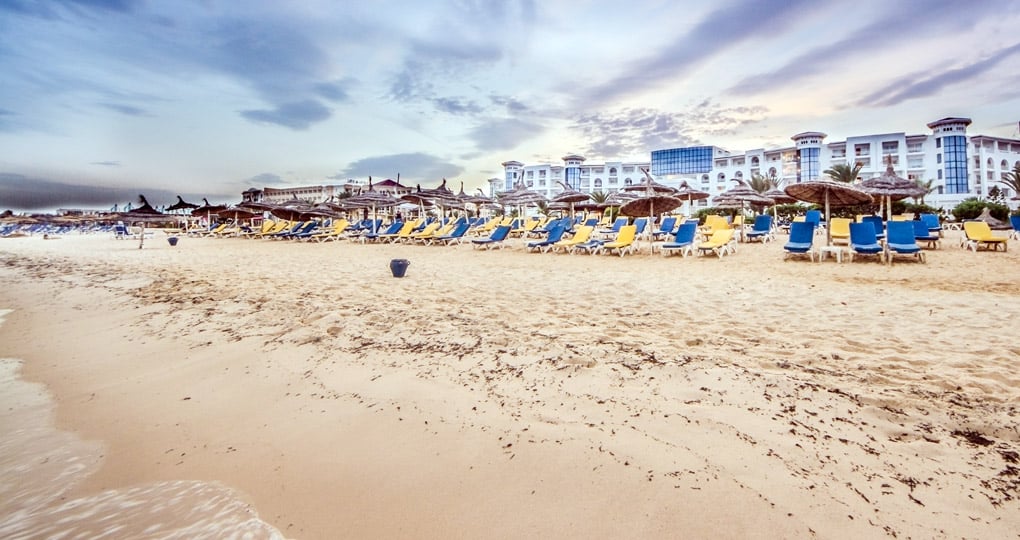
Relax on a Beach
The many seaside towns along the northeast coastline of Tunisia have their own unique appeal, from the calm and charming beaches of Monastir to the contemporary activity of lively Hammamet to the upscale and peaceful resorts of Djerba. All of these coastal areas have soft, white sand beaches as their foreground and the sparkling Mediterranean Sea as their background. A plethora of water activities are available across the supervised beaches, such as kite surfing, parasailing, boat tours, and scuba diving. It’s no wonder this is such a popular beach vacation destination for the country’s European neighbours.
Soak in History
With the many Roman, Byzantine, Jewish, and Berber historical sites scattered across the country, there are so many reasons that a history lover could spend a long time touring around Tunisia. From the Roman Amphitheatre in El Djem to the ancient site of Carthage to the abandoned and active Berber settlements in the desert to the ancient Jewish sites of Dougga and the Synagogue de la Ghriba, there is a little something for every history buff.
Markets and Medinas
Designated as a UNESCO World Heritage Site in 1979, the Medina of Tunis is one of the most famous in the country. Medinas are historical city or town centres found across North Africa (and the island of Malta), and are typically circled by walls and filled with dizzying mazes of shops and monuments. Souks, meanwhile, are markets or bazaars often located within a medina, where you can find all kinds of local textiles and artistry, freshly cooked delicacies, and engaging Tunisian people. Early morning is a great time to explore both medinas and their souks, when temperatures are lower and stalls are not as crowded.
Visit the Desert and its Oases
You may find yourself drawn to the over 27,000 km of seemingly endless desert in the southern regions of Tunisia, with waves of dunes constantly changing and shifting with the winds. This is a playground for outdoor activities, from camel riding and dune buggies to beautifully wide sunsets. In addition to the fun found in the sand, scattered amongst the landscape are beautiful, surprisingly lush oases like Tozeur and Nefta, which are full of palms, green vegetation, and intricately bricked buildings. Not far from Tozeur you’ll find the mountainous oasis called Chebika, with its waterfalls running down golden mountains into blue-green pools. Like a ghostly mirage, the old village of Tamerza appears to you after being abandoned in 1969 when the river running through it created a massive flood.
Essential Foods to Try
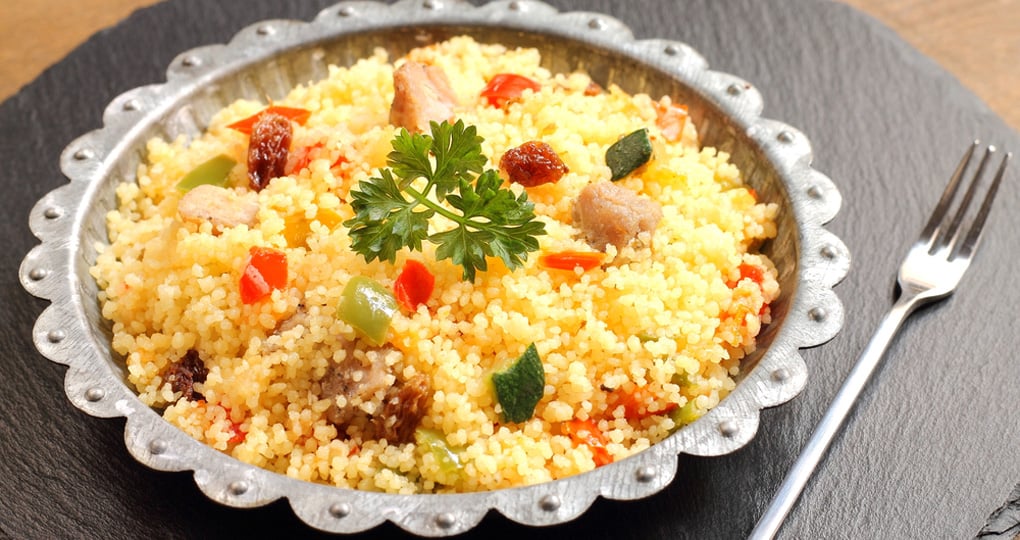
Couscous
You can’t go anywhere in Tunisia without being offered couscous at a restaurant. It’s a traditional North African dish made by steaming small ball-shaped Semolina wheat. It looks like a type of rice and is paired with similar types of dishes as rice, but is lower in calories and carbs and higher in fiber. You will often find couscous paired with lamb or fish and vegetables.
Soups and Stews
Often served accompanying couscous grains, stews made of tomatoes, lamb or fish and vegetables are very common in Tunisia. A popular stew, Kamounia, is made with beef or sometimes lamb and liver. Shakshuka (sometimes spelled “chakchouka”) is another variant of delicious and hearty stew that often includes eggs poached along with onions, garlic, and bell peppers. Most commonly eaten in winter, the soup called Lablabi is usually served in a unique way—an empty bowl and bread is presented to the diner, the diner breaks the bread into pieces to line the bowl, and the chickpea and spice soup is spooned over top of the bread.
Harissa Sauce
Harissa is not a meal but it is a very uniquely Tunisian specialty that you’ll find in or around most dishes. It’s a spicy sauce or paste made of chili peppers. Olive oil, salt, caraway seeds and garlic are also used to amp up the delicious and spicy flavours. You’ll find harissa served as a sauce on sandwiches and as an ingredient in soups like lablabi and slata mechouia (a grilled salad).
Fried Sandwiches
Brik is a thin pastry that’s filled with egg yolk, spices like coriander and parsley, and sometimes cheese or potatoes as well, that is deep fried until crispy and eaten with your hands. This flaky treat is best eaten hot and fresh with a sprinkle of lemon juice—challenge yourself to eat it without getting egg on your hands or face! Another delightful Tunisian specialty is the fried sandwich roll called fricassee, filled with tuna, olive oil, potatoes, and harissa. Interestingly, this can also be considered a specialty food in Paris where bakeries make this delightful dish due to their close ties with Tunisia.
Tips for Sustainable Travel
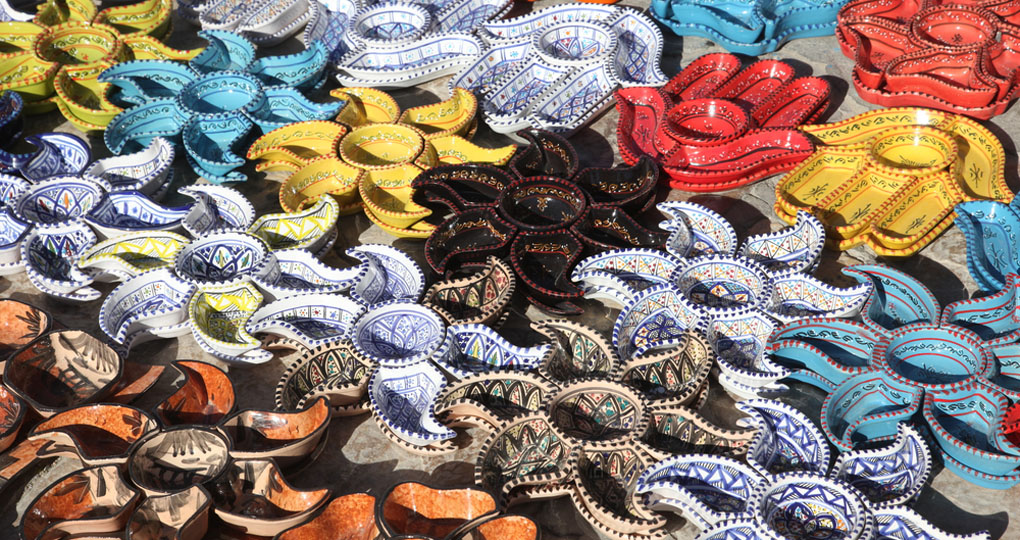
In 2019, the British Embassy in collaboration with the Federation of Tunisian hotels set out a sustainable tourism charter in which they are promoting important changes to increase environmentally friendly tourism in Tunisia. Through 2019 and 2020 they have made important changes to reduce the waste in the Mediterranean Sea by discontinuing use of single-use plastics like plastic plates and straws at resort hotels, managing waste effectively, and encouraging contributions to the local economy by increasing local artisan work sold and sourcing local food and produce. The goal is to gain a Global Sustainable Tourism certification by the end of 2020. Travellers are encouraged to tour and shop with locally owned businesses and directly from artisans, to reduce usage of plastics and dispose of any waste properly, and to leave the country just as beautiful as you found it.
Where to Go Next
With its strategic location in North Africa and tied cultural elements, an easy next country to visit after Tunisia would be Morocco or Egypt. Because of its shared Roman and ancient history, a history and cultural tourist would love to see the common denominators in Italy or even the island of Malta or Turkey. Tunisia and France have a relatively recent history, and lots of flights route through here from North America, so a trip to Paris as a stopover or next stop would highlight how much these two countries have influenced each other.
Most Popular Itineraries for Tunisia
There are many great ways to visit Tunisia, but a great way to see a variety of different sights across the country with expert guides would be an escorted tour. The Sahara Splendour tour includes 6 nights/7 days with a professional guide and includes visits to the towns of Tunis, Sidi Bou Said, the island of Djerba and Roman amphitheatre, as well as some of the Star Wars filming locations and a jaunt into the Sahara. For a bit of a longer stay that combines many of the above sites followed by a relaxing stay at a lovely beach resort in Hammamet, check out the Tunisia Explorer tour.
9 Jul 2020, 7:31 p.m.


